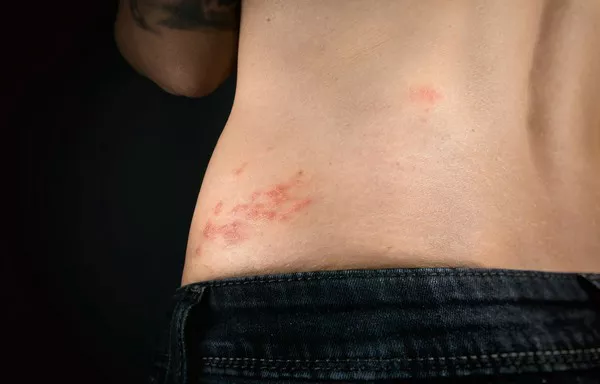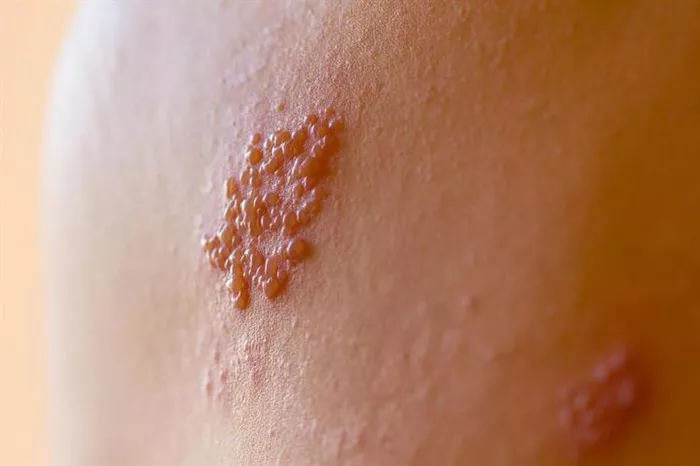Postherpetic neuralgia (PHN) is a type of pain that occurs after a person has recovered from a shingles infection. It can be debilitating and cause severe discomfort. However, one common question that arises when people hear about PHN is whether it is contagious. In this article, we will explore PHN in detail, how it develops, and whether or not it can be spread from one person to another.
What is Postherpetic Neuralgia (PHN)?
Postherpetic neuralgia (PHN) is a complication of shingles, which is caused by the varicella-zoster virus (VZV). This virus is the same one that causes chickenpox in children. After someone recovers from chickenpox, the virus remains dormant in the nerve tissue. Later in life, the virus can reactivate, leading to shingles. Shingles is characterized by a painful rash, usually on one side of the body, often in a stripe or band-like pattern.
Once the shingles rash heals, some people experience ongoing nerve pain, known as postherpetic neuralgia. This condition occurs when the nerve fibers that were affected by the shingles infection continue to send pain signals to the brain, even after the rash has disappeared. The pain can be burning, stabbing, or throbbing and can last for months or even years in some cases.
How Does Postherpetic Neuralgia Develop?
PHN develops after a person experiences a shingles outbreak. The shingles rash typically appears in a small area on the skin and is often accompanied by pain, itching, and tingling. The rash usually heals within two to four weeks. However, the nerve damage caused by the varicella-zoster virus can leave behind long-lasting pain. This persistent pain is what characterizes PHN.
Not everyone who has shingles will develop PHN. The risk of developing PHN increases with age, particularly for those over 60 years old. Individuals with weakened immune systems or those who experience a more severe shingles outbreak are also at higher risk for PHN.
Is PHN Contagious?
The short answer is no, postherpetic neuralgia itself is not contagious. The pain and nerve damage associated with PHN cannot be passed from one person to another. However, the underlying cause of PHN, which is the varicella-zoster virus, can be spread to others, but only if they have never had chickenpox or received the chickenpox vaccine.
The varicella-zoster virus is contagious, but it is important to understand how it spreads. When a person has an active shingles rash, the virus can be transmitted through direct contact with the fluid-filled blisters. If someone who has never had chickenpox or been vaccinated comes into contact with this fluid, they can contract the virus and develop chickenpox, not shingles or PHN.
Once the blisters dry up and scab over, the person is no longer contagious. This means that even though someone with shingles may be contagious while the rash is active, PHN itself (which occurs after the rash has healed) is not contagious. It is the shingles outbreak that can be passed to others, not the lingering pain that follows.
How Does the Varicella-Zoster Virus Spread?
While PHN itself is not contagious, the virus that causes it, the varicella-zoster virus, can spread from one person to another. As mentioned earlier, the varicella-zoster virus causes both chickenpox and shingles. Here’s how it can spread:
Chickenpox Transmission: If a person who has never had chickenpox or been vaccinated comes into contact with the varicella-zoster virus, they may develop chickenpox. This usually happens when they are exposed to the fluid from the shingles rash. It is not possible to catch shingles from another person; however, if you have never had chickenpox, you are at risk of contracting it from someone with shingles.
Shingles Transmission: If you have already had chickenpox, the virus lies dormant in your nerve tissues. It may reactivate later in life, resulting in shingles. It is not possible to get shingles directly from someone else, but if you have never had chickenpox, you can contract chickenpox from someone with active shingles.
Contagion Period: A person with shingles is contagious from the time their rash appears until the blisters have crusted over, which typically takes about 7-10 days. During this period, it is advisable to avoid contact with those who have not had chickenpox or the vaccine, particularly pregnant women, newborns, and individuals with weakened immune systems.
Can You Get PHN Without Getting Shingles?
It is not possible to develop postherpetic neuralgia (PHN) without having had a shingles outbreak. PHN is a complication that occurs only after the shingles rash has healed. Therefore, to experience PHN, a person must first have shingles.
However, if a person gets shingles, there is a chance they could develop PHN afterward, especially if they are older or have a compromised immune system. The pain associated with PHN can be severe and last for months or years, affecting the quality of life. But again, PHN itself is not contagious—only the shingles rash is capable of spreading the varicella-zoster virus to others.
Is There a Risk of Spreading PHN to Others?
No, there is no risk of spreading PHN to other people. Since PHN is a condition that affects the nervous system and causes chronic pain, it is not caused by an infection that can be transmitted to others. PHN is simply a consequence of nerve damage resulting from a shingles outbreak.
However, as mentioned earlier, if someone has active shingles, they can pass the varicella-zoster virus to someone who has never had chickenpox. In this case, the person who contracts the virus may develop chickenpox, which could later lead to shingles and, in some cases, PHN.
How to Prevent the Spread of Shingles (and Prevent PHN)
While PHN itself is not contagious, preventing the spread of the varicella-zoster virus that causes shingles is important. Here are some steps to prevent the virus from spreading:
Get Vaccinated: The shingles vaccine is recommended for adults over the age of 50, even those who have had chickenpox in the past. The vaccine can help prevent shingles or reduce the severity of the disease if it does occur. It can also lower the risk of developing PHN.
Avoid Contact with Vulnerable Individuals: If you have an active shingles rash, avoid close contact with pregnant women, newborns, and individuals with weakened immune systems, such as those undergoing cancer treatments or taking immunosuppressive drugs.
Cover the Rash: If you have shingles, cover the rash with a clean, dry bandage to reduce the chance of transmitting the virus. Avoid touching or scratching the rash, as this can spread the virus to other parts of your body or to other people.
Good Hygiene: Wash your hands frequently and avoid sharing towels, clothing, or other personal items with someone who has shingles.
Conclusion
Postherpetic neuralgia is not contagious. It is a painful condition that develops after a person has experienced a shingles outbreak, but the nerve pain and discomfort associated with PHN cannot be passed from person to person. However, the varicella-zoster virus, which causes both chickenpox and shingles, is contagious during the active stages of shingles. It is important to take precautions to prevent spreading the virus, especially to vulnerable individuals who have not had chickenpox or been vaccinated.
If you have had shingles and are experiencing persistent nerve pain, it is important to speak with a healthcare provider. There are treatments available to help manage the pain and improve the quality of life for those suffering from PHN.
Related topics:


























